Smooth, slippery and heavenly soft, Chinese steamed eggs requires minimum ingredients yet delivers a delicate look and flavour. Learn how to make it flawlessly.
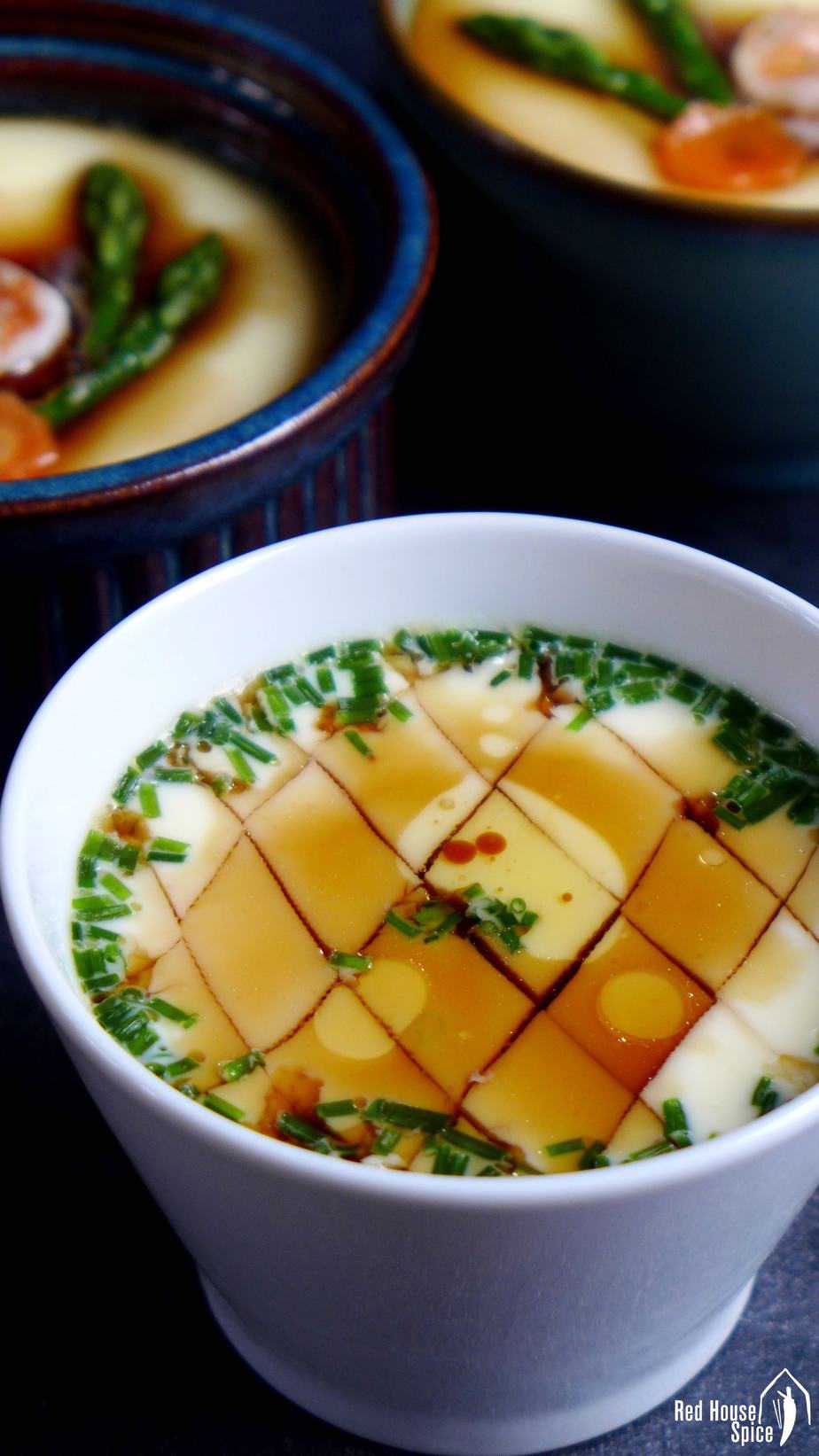
Jump to:
What are steamed eggs
I’m very lucky to have had a childhood full of sweet memories and many of them are food-related. My family didn’t have any sophisticated ingredients but every single dish my mum & dad prepared was so satisfying and delicious.
Today, I’m sharing a super simple dish that always reminds me of my dear mum (now it has become my own children’s favourite dish): Chinese steamed eggs (蒸蛋羹), also know as water egg or egg custard.
It couldn’t be simpler to make Chinese steamed eggs: beat the eggs, add water then steam. Voilà, all done! However, it does require a bit of attention to detail to achieve the perfect texture: smooth, slippery and heavenly soft.
I consider myself a perfectionist especially when it comes to cooking, so I’d love to share my tricks on how to produce a bowl of flawless Chinese steamed eggs.
The perfect egg water ratio
The ideal egg water ratio should be around 1:2 in volume. Too much egg will result in a hard curd, whereas too much water will make it impossible to turn the mixture into a solid form.
For example, I normally use medium-sized eggs which measure about 50ml each. So I add 100ml of water. If you wish, replace water with chicken stock for a fuller taste.
The ideal water temperature
Warm water works best for Chinese steamed eggs. The right temperature helps the beaten egg and the water to combine. I would suggest around 45°C (113°F). But don’t rush to buy a thermometer! I have a simple trick: boil some water, then pour it into the same amount of tap water.
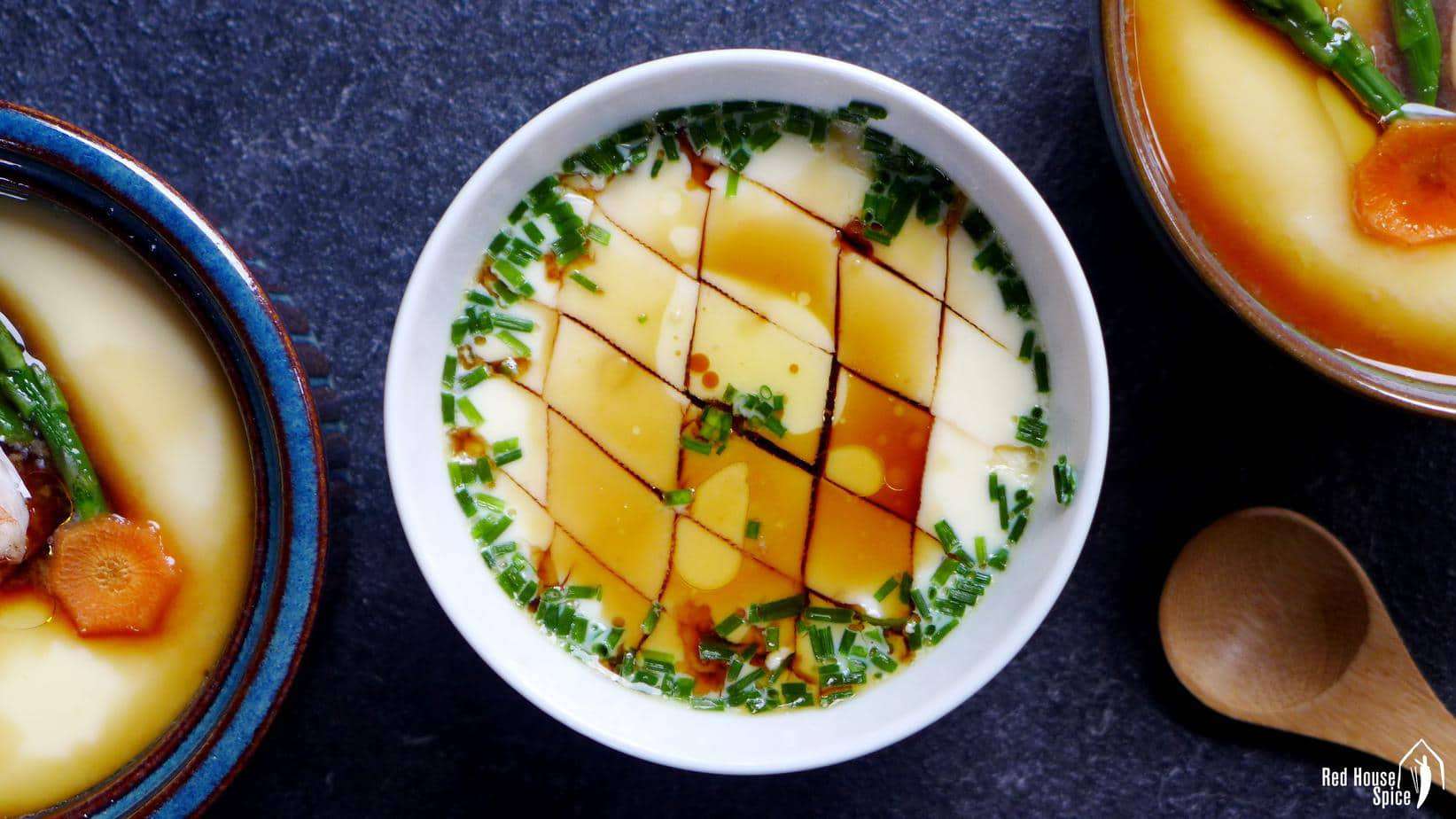
Avoid lumps and bubbles
In order to make the steamed egg super smooth, you need to remove any lumps and bubbles in the egg water mixture prior to steaming. If possible, use a sieve to filter when pouring the mixture into steaming bowl(s).
Steamer set-ups
When it comes to steaming, I’ve got two options for you:
- Use a regular steamer if you have one;
- Use an ordinary pot that is wide enough to place your bowl(s). Sit the bowls directly in the boiling water. Make sure the water level is right: low enough not to splash into the egg bowl and high enough to complete 10 minutes steaming without drying out the pot.
Avoid dripping water
Unless using a traditional bamboo steamer which allows the steam to escape from the lid, I suggest you cover the bowls with cling film (pierce a couple of times). This is to prevent the condensation on the lid from dripping onto the smooth surface of the egg curd. See the image above: the bowl on the left wasn’t covered by cling film thus has an uneven surface.
Seasoning: less is more
Chinese steamed eggs doesn’t need sophisticated seasoning to impress your palate. Exactly like how my mum serves this dish, I only add a little light soy sauce and sesame oil, then cut through the curd several times to let the sauce penetrate. Simply delicious!
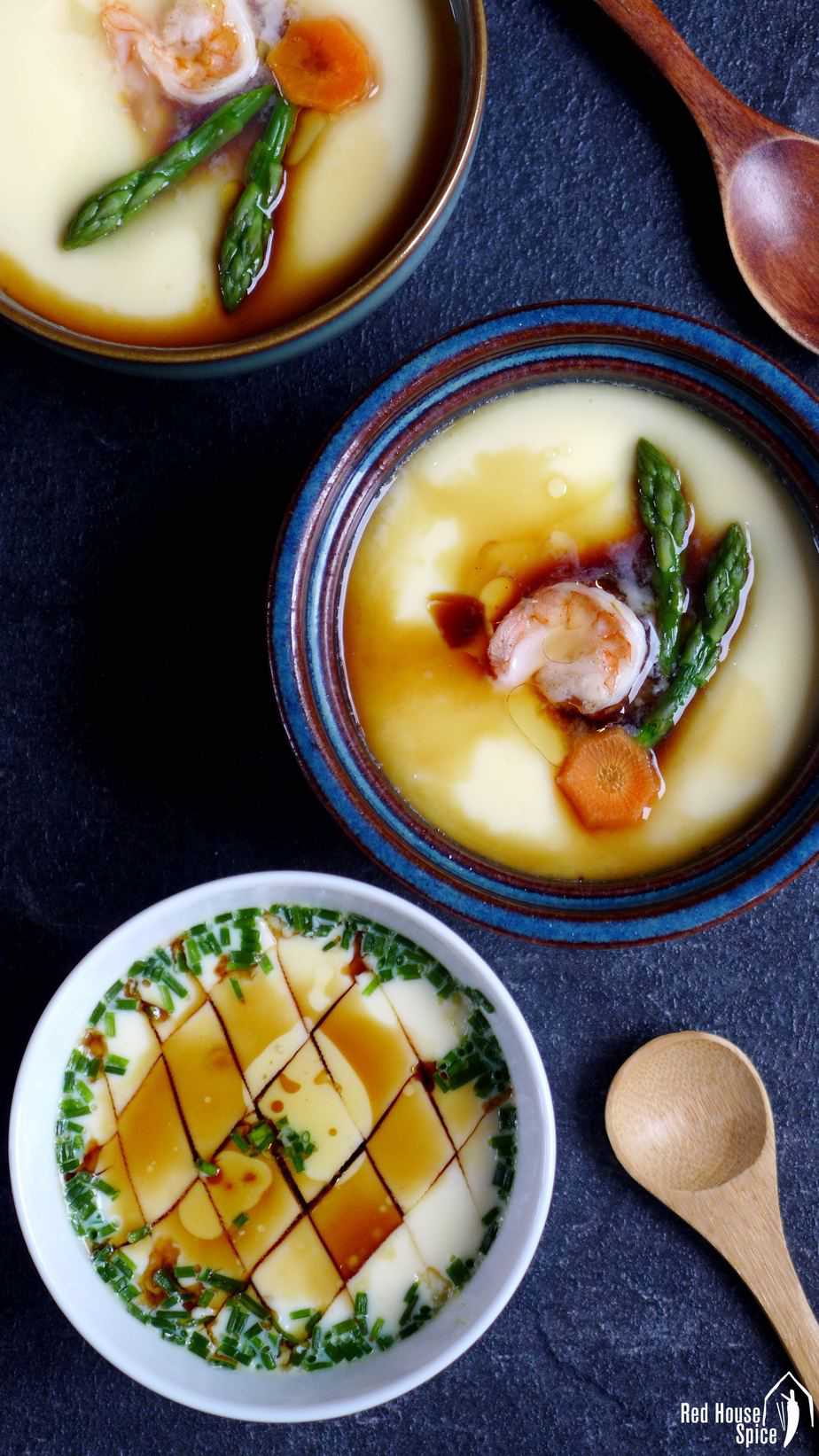
Optional garnish
Sometimes, I garnish the steamed eggs with prawns and vegetables like asparagus, carrot, etc. In this case, you need to steam the eggs as usual for 7 minutes, then place in the garnish and steam for a further 3 minutes.
📋 Recipe
Love this recipe? Please leave a 5-star 🌟🌟🌟🌟🌟 rating in the recipe card below & if you REALLY like it, consider leaving a comment as well!
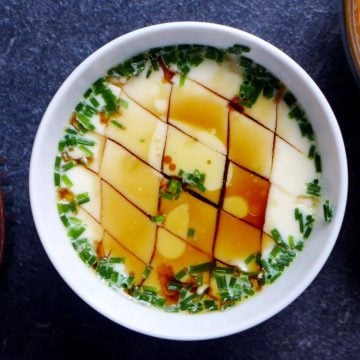
Chinese steamed eggs (蒸蛋羹)
Ingredients
- 2 eggs - beaten
- Warm water - double volume of the beaten eggs (see note 1 & 2)
- 1 pinch salt
- 1 teaspoon chive - finely chopped (optional)
- 2 teaspoon light soy sauce
- 2 drop sesame oil
Extra garnish (optional)
- Prawns - peeled and deveined
- Asparagus & carrot
Instructions
- Pour warm water into the beaten eggs. Add salt then stir well.
- Through a sieve, pour the mixture into 2 small serving bowls. Sprinkle chive over if using.
- Cover the bowls with cling film. Pierce to allow the steam to escape.
- Steam for 10-12 minutes over a gentle heat (place the bowls in when the water starts to boil).
- If using extra garnish: Steam the egg as usual for 7 minutes, then place in prawns and vegetables. Steam for a further 3 minutes.
NOTES
NUTRITION
NUTRITION DISCLOSURE: Nutritional information on this website is provided as a courtesy to readers. It should be considered estimates. Please use your own brand nutritional values or your preferred nutrition calculator to double check against our estimates.
Hope you find this “perfectionist’s guide” useful. Check out other scrumptious recipes using eggs as the main ingredient: Marbled tea eggs, Egg fried rice noodles, Tomato & egg stir fry.


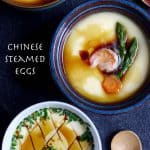
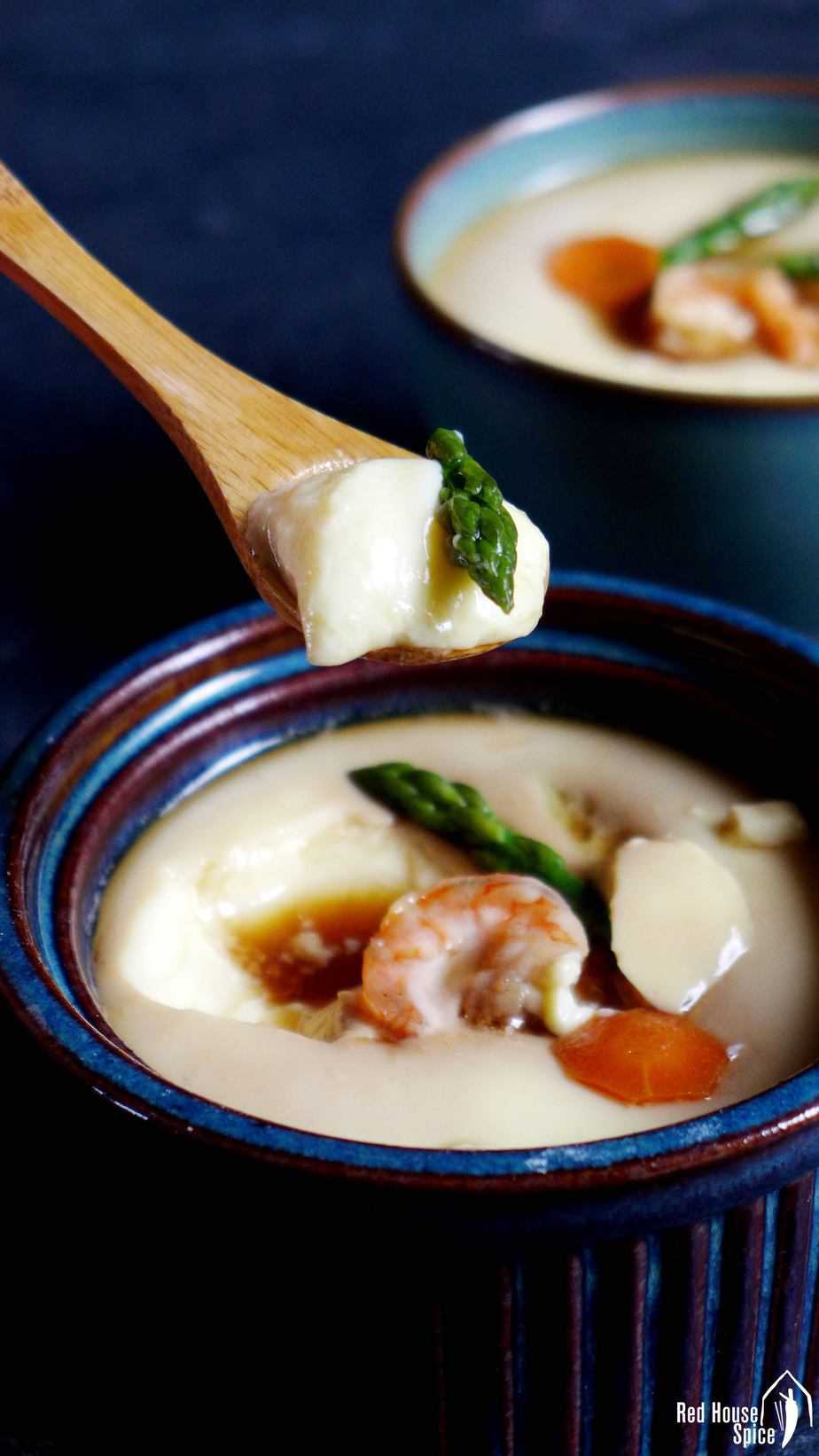
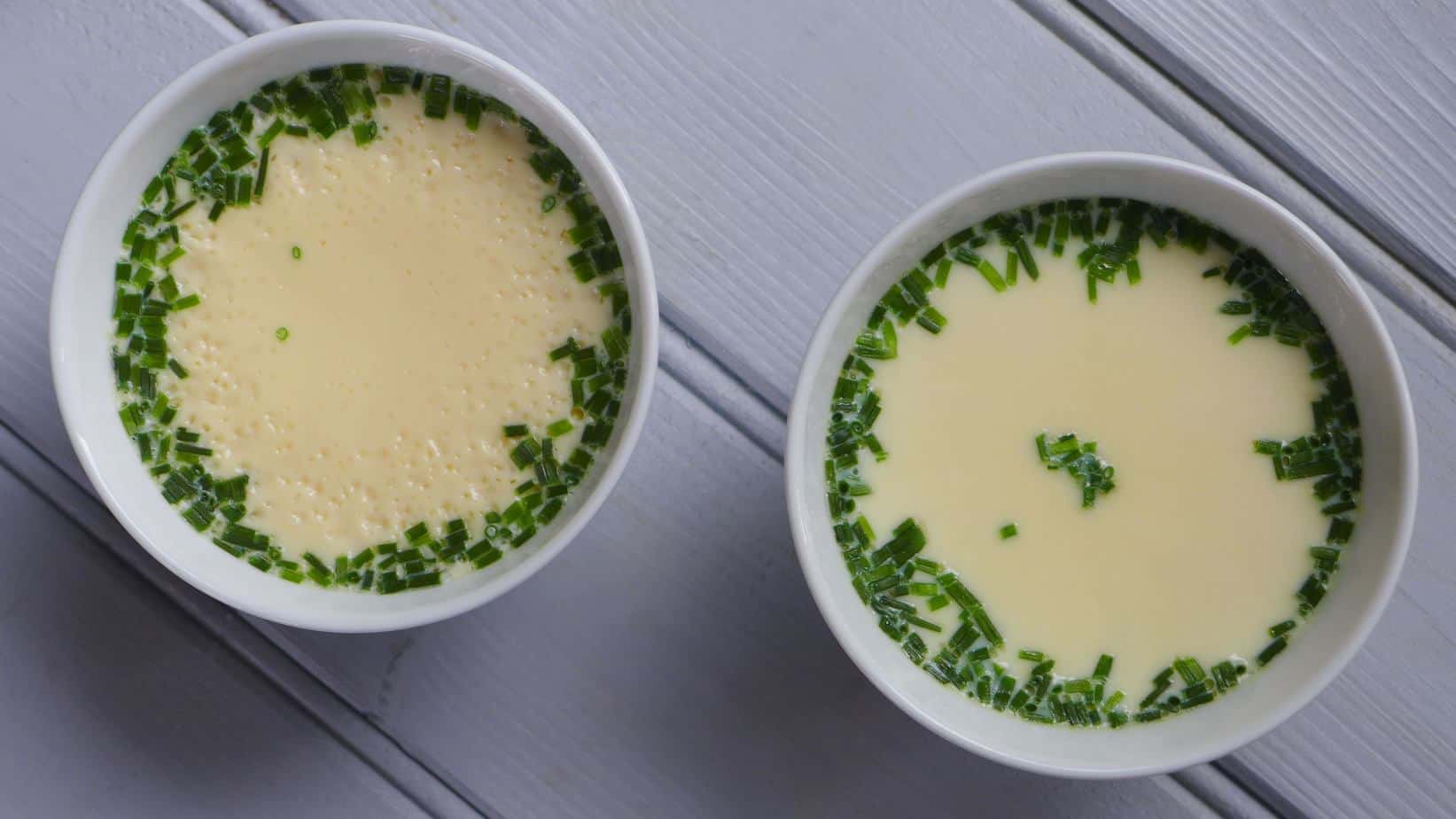
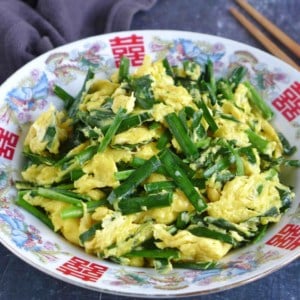
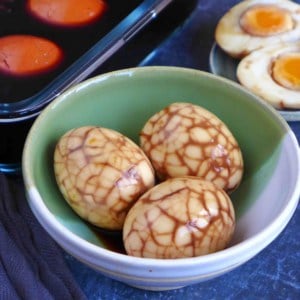
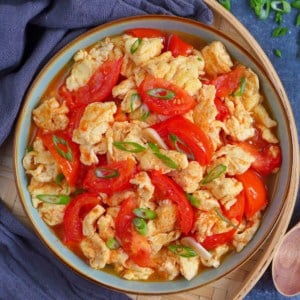
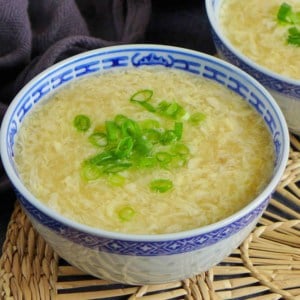
Lovely eggs.
I love love LOVE steamed egg and have made it many times. I appreciate your tips to make it perfect! But I have one overriding question: How do you get the egg residue off the bowl after cooking? I have tried spraying with cooking oil beforehand, soaking after, scrubbing and scrubbing…and still the egg sticks and won’t let go. All advice very much appreciated!
I hear you Erika! If you follow the egg water ratio of this recipe, the egg residue won’t be too hard to remove. Just remember to soak the bowl right after you finish it (the residue hardens over time).
Sometimes the simplest things are the best. My partner wasn’t keen to try this but admitted it was really nice as a side dish. My steamer basket went big enough for two small bowls so therefore I will try cooking in a shallow plate as you suggested for bigger servings.
Glad you’ve enjoyed it!
Hello,
It looks good and the recipe is nicely describe. I would like to try it with a bamboo steamer. Is there something changing about the heating ?
If use a bamboo steamer, you don’t need to cover the bowls with cling film as the steam can escape easily. The cooking time remains the same. Happy cooking!
Absolutely delicious. I’m having this for breakfast most days now. So far I have used a pottery rice bowl for steaming the eggs in which works fine, but I notice that many of the steamed egg bowls you can buy online from China/Korea are stainless steel. What’s your opinion of stainless steel bowls for steamed egg?
Stainless steel bowls are perfectly fine for steamed eggs. I always use ceramic bowls simply because I think they look much nicer.
Thank you for all the essential tips to get a perfect bowl of steamed egg.
Margaret.
You’re welcome Margaret! Glad you’ve enjoyed it.
Hi Wei:
You mention Note #3 in the instructions, but Note #3 does not appear in the notes.
So, I remove the cling wrap when adding the soy/sesame oil and adding the garnish. Working on improving the results, although nothing wrong with the results so far.
Thank you Rick for the reminder. It was an error. Glad you’ve enjoyed it!
Brings me back to childhood memories with my families, she did exactly the same as your recipe and my mum add in a teaspoon of arrow root powder and have the steamer ready hot and cook straight away. When ready top with a sesame oil and white soya sauce and chives and sometimes spring onions.
From: Coffs Harbour
Lovely to hear your mum’s version!
thank you for this lovely recipe. got it perfect on the second try. first time I was over zealous in mixing the eggs and some bubbles remained even after straining. I also lowered the heat under the steamer the second time and cooked it for 12 minutes. it came out absolutely perfect!
have you ever made them with a touch of sweet syrup instead of savory? I am thinking it would make a lovely dessert with some berries and a touch of honey perhaps???
Glad you’ve enjoyed it! Steamed egg is usually served as a savoury dish in China. I’ve never tried the sweet version. But why not! I’m sure it’ll taste great with honey and berries!
I’m kind of confused about the heating. When you say “gentle heat,” do you mean reduce the heat to a simmer once the water starts to boil?
Yes, turn the heat down to low once the water starts to boil.